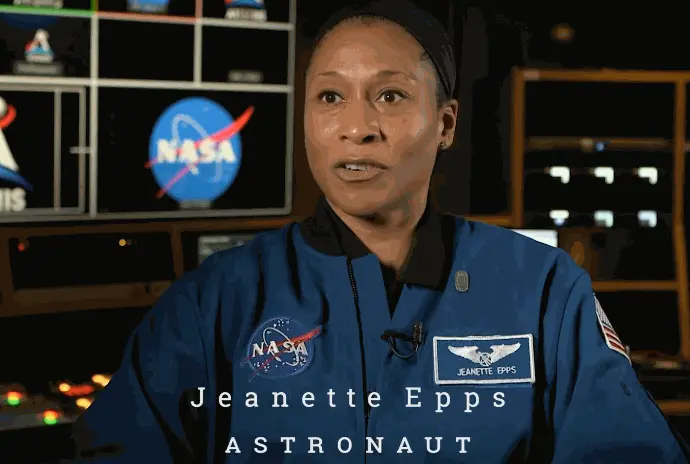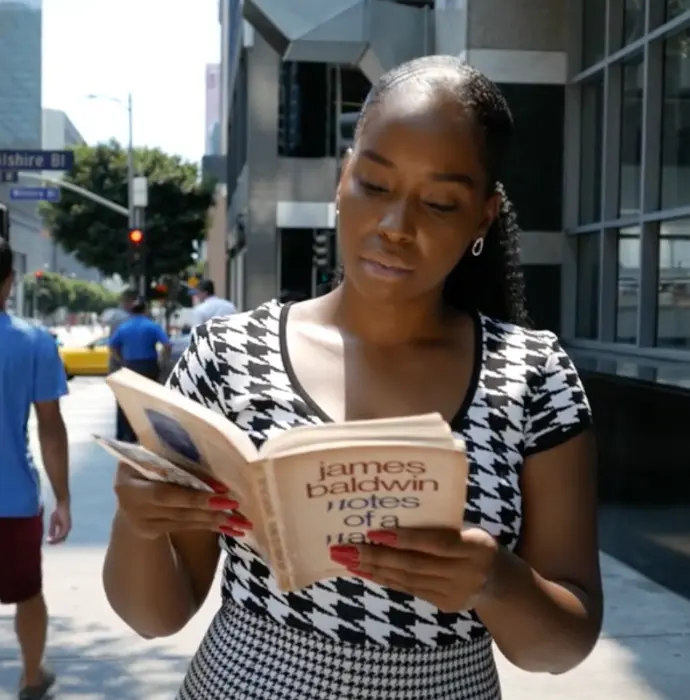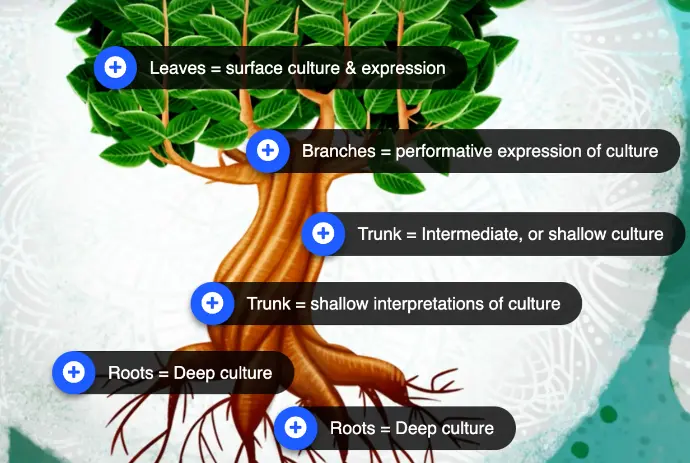ID: French manicured hand resting on the spine of books on a shelf.
“If [teachers] in the classroom don’t share the identity of their students, the students still need to be seen within the classroom.” -Ashley Causey-Golden
At the beginning of the month of February our partners began to discuss representation. With Black History Month upon us, we were searching for ways to support teachers as they share lessons and celebrate the lives and contributions of Black people in the United States. Within that discussion we landed on the fundamentally important concept of Identity Development. Dr. Katherine Schlatter posed the prompt:
“How can teachers support identity development when they themselves don’t hold the same identity as their students?
In response, educator and thought leader, Ashley Causey-Golden founder of Gather Forest School and Afrocentric Montessori, reiterated the importance of the resources and materials that are brought into the classroom. We also discussed the importance of Black History Month projects and lessons on historical figures but also how the current lives of Black people can positively influence our learners.

Dr. Epps speaks candidly about the importance of being visible to African American girls in particular, and the meaning of her visibility for their identity development. See the interactive media at This Month
Go now
ID: A Black women in a NASA uniform is looking off camera with a large circular NASA logo on a screen behind her.
For example Dr. Jeanette Epps, a Black American engineer was selected by NASA in 2009 to become an astronaut. As she embarks on groundbreaking space missions and scientific research, Dr. Epps has been preparing for a mission to space that is scheduled to take place later in 2024. This, is exactly the kind of current information that could be used as a resource to create materials and the kind of lessons that support identity development for all learners.
To further support our learning and discussion of identity development; Ashley also directed us to read and delve into the work of Dr. Gholdy Muhammad, author of Cultivating Genius: An Equity Framework for Culturally and Historically Responsive Literature. This textbook presents Dr. Muhammad's five essential ideas. They are identify, skills, intellect, criticality and joy. You can see a clip of the conversation here.

Five ideas...
Dr. Gholdy Muhammad names five essential ideas. They are identify, skills, intellect, criticality and joy.
ID: To the left a Black woman in a black and white checkered top is walking down the streets of a city reading Notes of a Native Sun by James Baldwin.
Now that March is upon us and as we turn to Women's History Month, this does not mean that the exploration of history makers ceases to be about black identity development for black students. To paraphrase some of the questions proposed by Dr. Muhammad, we may ask outselves: “Why are we teaching this?” Related to this question is: “Why are we choosing this material, book, or lesson plan?” Also, crucially we may consider asking “Why might this be relevant to students receiving this lesson?” In other words, to get to the “How” it is first important to answer the “Why” of teaching any given material in the classroom and its relatability to your students.
In February we also reviewed and amplified a key model for culturally responsive learning put forward by Black American author and pedagogical expert Zaretta Hammond. Her book Culturally Responsive Teaching and the Brain can be bought here. Early in the book Hammond explains how culture is often presented as an iceberg image and metaphor. Hammond chooses instead to presents the Tree as a metaphor for culture. It's a wonderfully fleshed out idea, where the leaves, flowers and fruit are the most observable evidence of culture, and the less spoken about norms form the tree trunk whereas the roots reflect the "bedrock of self concept, group identity, approaches to problem solving and decision making." (page 23 of Culturally Responsive Teaching and the Brain).
Sample our interactive media with "The Culture Tree" metaphor at This Month.

THENCE Partner Ashley- Causey Golden, presented several interactive media through our Reel Reels series. The material demonstrates how Causey-Golden thinks about the Culture Tree and uses it to educate students and invite families to participate in classroom presentations. You can see those interactive videos here at This Month.
ID: A tree with various labels. "Roots=Deep Culture, Trunk=Intermediate or shallow interpretation of culture, Branches=Performative expression of culture, Leaves=Surface culture and expression."
Lastly, we also welcomed in the Lunar New Year, and with it the "Year of the Dragon". We were joined by Angel Chan our Chinese cultural expert from the City of Hong Kong, China. She shared the deeper meaning of the arrival of the New Year which is also considered the start of Spring, and a time of renewal. A paper cut out art (see below) activity is also an excellent classroom craft with a bonus SEL (social and emotional learning) activity where Ms. Chan’s guide encourages students to add their wishes for how they envision renewal, anticipate their own goals and achievements for the year ahead. Check that at This Month here.

"Spring"
Nikita Lai Jing Tse filmed the making of a three dimensional Chinese character. This craft can be for practically any age group in K-12 schools. Enjoy the Video!
ID: A red Chinese character representing "Chueng" resting on a piece of yellow construction paper.
Now that March is upon us we turn the page to Women's History Month. Excitingly, we are continuing our discussion of pedagogy through the presentation of a new curation tool named SABAR Books. The title of the series is a blend of an acronym that stands for Selecting Anti-Bias and Anti-Racist Books. It covers quintessential literature from bell hooks, Louse Derman-Sparks, Audre Lorde and Rudine Sims Bishop as their writing relate to curation, thought leadership, and pedagogy.
As always our interactive media offers validated reflective exercises. Sign up for the This Month Bulletin where the professional development focuses on skills required for examining a classroom or home book collection. Have ideas, questions or infrastructural needs to discuss with our team? Contact us below.